'An apple a day keeps the doctor away', especially if you grew it yourself
Lately, we've been eating a lot of strawberries and currants from the vegetable garden, and apples and pears will follow soon. In our chicken run, we have two low-stem fruit trees : an apple tree and a pear tree . Perfect because my vegetable garden isn't very large. Fruit trees are also suitable for small gardens. Growing fruit isn't actually as difficult as you might think. So, how exactly do you do it? In this article, I'll explain everything. Planting a fruit tree will be child's play. Growing fruit doesn't just ensure a good harvest. In spring, you can enjoy the beautiful blooms and the bees buzzing from one blossom to the next. Here we go!
The different types of fruit trees
TIP 1: Choose the right type of fruit tree to plant based on the size of your vegetable garden
Anyone can grow fruit. You don't need a huge vegetable garden. The most important thing is to choose a fruit tree that fits your garden. There are five different types of fruit trees available. To get an idea of how big your fruit tree will grow, look at the terms patio tree, columnar tree, low-stem, half-stem, and high-stem. These terms refer to the type of rootstock used for grafting. Just like grapes, fruit trees are grafted at the nursery because it's known that ungrafted fruit trees often root less well, resulting in weaker growth and lower yields. Just like us, you naturally want strong fruit trees that bear kilos of fruit. That's why we only offer grafted fruit trees in our webshop. I'll now explain exactly what the terms patio tree, columnar tree, low-stem, half-stem, and high-stem mean.

Mini plum tree
Patio trees
Patio trees are also called ballerina or mini fruit trees. This is because, guess what?, they stay very small. They grow to about 1.5 meters tall. Perfect for growing in pots (for example, on your patio or balcony) and require little maintenance. Keep them small by pruning occasionally. This tree may be small, but the fruit grows to the same size as a standard fruit tree. Do make sure you give your fruit trees enough water. If your tree has been dry, it will drop its fruit first. What a shame! If you choose to plant your fruit tree in the ground, water it mainly in the summer or on hot days during the year you plant it. Later, I'll share tips on how and where to best plant a tree.

Columnar apple trees grow vertically and produce few side branches
Columnar trees
A columnar tree is a fruit tree that grows vertically and produces very few side branches. Therefore, a columnar tree takes up very little space. It's ideal for growing fruit in smaller areas or in (40-liter) pots. Because a columnar tree produces few to no side branches, pruning is unnecessary. Do you have an empty spot next to your garden shed? This type of fruit tree is ideal for making the most of small spaces.

Low-stemmed Conference pear tree
Low-stem fruit trees
Low-stemmed means the tree is grafted onto a slow-growing rootstock, allowing the trees to bear fruit faster and grow smaller. The advantages of this are that they are suitable for smaller (vegetable) gardens and allow you to grow more varieties in the same space. A low-stemmed fruit tree grows to about 2.5 to 4 meters tall, so leave 2.5 to 4 meters between each low-stemmed fruit tree. It's important to leave sufficient space between the trees so they can grow well and develop optimally. This is helpful because it allows you to harvest easily, safely, and without a long ladder. Low-stemmed fruit trees don't take up much space. Ideal for anyone (including myself ? ) who finds their vegetable garden too small for everything they want to grow. Low-stemmed fruit trees live for about 3 to 40 years. We offer a wide variety of fruit trees in our online store. Be sure to take a look; there are some really nice varieties. Choose fruits you enjoy. Just because these fruit trees are short-stemmed doesn't mean you'll have a smaller harvest. You can expect a harvest of between 5 and 20 kg of fruit. Ideal for growing a lot of fruit, even if you have a small vegetable garden.
Half-stem fruit trees
Half-standard fruit trees, like low-standard fruit trees, are grafted onto a slow-growing rootstock. Half-standard fruit trees grow to about 5 meters tall, so you should also allow 5 meters of planting space between them. This type of fruit tree requires a bit more space than low-standard fruit trees. A half-standard fruit tree can easily yield 50 kg of fruit. They can live for 60 to 100 years.
High-stem fruit trees
Standard fruit trees are, as their name suggests, the tallest variety. They can reach 7 to 8 meters tall. The recommended planting distance is again based on the estimated height: 7 to 8 meters. You'll need a fairly large garden (or orchard) for these fruit trees. The rootstock of a standard fruit tree is at least 1.7 meters tall, so we don't offer this type of fruit tree.
Planting a fruit tree
And now for the real work. After figuring out which type of fruit trees are suitable for your vegetable garden and choosing the fruit variety(s) you'll grow, you'll plant your fruit trees. When planting trees, it's important to pay attention to the correct preparation and planting technique so the trees can grow well and produce an optimal yield. I'll explain the best way to do this now.
TIP 2: Keep in mind that fruit trees grow old
When planting fruit trees, you need to consider the future a bit more than when planning your vegetable garden. Most vegetables only last one or two seasons in your vegetable garden, while most fruit trees can live 30, 40, and even 100 years. The lifespan of fruit trees also depends somewhat on care and size. The older a tree can get, the larger it will become.
TIP 3: Want lots of fruit? Plant more than one fruit tree of the same variety to increase your harvest.

By allowing cross-pollination to take place, you play it safe
What about cross-pollination? Cross-pollination of fruit trees occurs during flowering, when pollen is transferred from the male part of the flower to the female part. This transfer of pollen from one fruit tree to another is called cross-pollination. Therefore, it's a good idea to plant two different types of apple trees, for example, so that insects can find enough blossoms and transfer the pollen from one tree to the other. Cross-pollination can only occur between the same type of fruit tree; for example, a pear tree cannot pollinate a cherry tree. We offer a number of classic and specialty varieties for each type of fruit tree. For example, we have 17 apple varieties available in our webshop :)

Classic apple varieties (left to right): Jonagold, Elstar, Rode Boskoop, Braeburn, Granny Smith, Golden Delicious.

Special apple tree varieties (left to right): Red Love Lubera, Sparkling Lubera, Bramley's Seedling, Cox's Orange Pippin, Discovery, Gala, Gloster, Gravenstein, Ingrid Marie, James Grieve, Summerred.
When is the best time to plant your fruit tree?
TIP 4: You can actually plant fruit trees almost all year round
The fruit trees we offer in our webshop are delivered in pots. They've already established a root system, so you can plant them virtually year-round. The best planting time is autumn. It's not as hot then, there's still some rain, and the fruit trees still have plenty of time to establish roots. This way, they can enter the winter with a strong root system and sprout their first shoots in spring, perhaps bearing their first fruit a few months later. But be careful! Never plant fruit trees during frost. Sometimes fruit trees are also offered bare-root. We don't do that at Plukkers. For the simple reason that the roots would quickly dry out during the winter, giving your tree a bad start.
How do you plant a fruit tree?
Good preparation is essential for successful tree planting in the open ground. Start by choosing a suitable spot and dig a spacious planting hole large enough for the tree's roots. You can mix the excavated soil with compost or other organic matter to improve the soil structure. This ensures that the soil is loose and nutrient-rich, which promotes root development. Note: Do not use fresh compost or manure. Worm castings are the best choice.
When planting a tree, it's important to consider the type of roots. Trees with root balls should be placed in the planting hole with the root ball in place, while bare-root trees should be carefully spread out in the hole. Ensure the roots have sufficient space and aren't crowded.
Backfill the planting hole with the improved excavated soil and lightly press it down. After planting, it's important to water the tree generously with a full bucket of water. This helps the soil settle around the roots and prevents air gaps.
By following these steps, you'll give your fruit trees the best start and increase their chances of healthy growth.
TIP 5: ensure loose soil with sufficient structure
Regardless of which type of fruit tree you choose (mini fruit tree, columnar tree, dwarf, half-standard, or standard), the planting procedure remains the same. Loosen the soil well, using a spade , and ensure good soil structure by adding worm compost , lava grit , basalt flour (and, if growing in sandy soil, bentonite ). Dig a hole about half a meter in diameter and make a planting hole slightly deeper than your planting pot. Collect the soil in a bucket and mix in a third of it with coconut fiber or compost . This will improve the soil structure, help retain moisture, and make it easier for the tree to root. Always plant your tree at the same depth as it was at the grower's (the depth of the pot).
Planting distance
The spacing between fruit trees is the same as the estimated size of your fruit tree. If you choose patio fruit trees, maintain a distance of 1 to 1.5 meters, for low-stemmed fruit trees, 2.5 to 4 meters, for half-stemmed fruit trees, maintain a distance of 5 meters, and so on. Columnar fruit trees are an exception; you can plant them closer together. Because columnar trees hardly produce any side branches, a planting distance of 0.5 meters is sufficient.
Support your fruit tree
After you've planted your fruit tree, it's important to support it. A support stake is essential for young trees to prevent them from growing crooked or being damaged by the wind. I use a chestnut stake and a tree tie for this. You can also use multiple stakes for extra stability, especially with larger trees or in windy locations. Place the support stake on the side of the prevailing wind, for example, southwest of your fruit tree, so that the tree is protected from the wind and doesn't constantly blow against the stake. This prevents the trunk from rubbing and becoming damaged. Drive the stake about 40 cm into the ground. Secure the tree to the support stake with a tree tie at a height of about 30-40 cm to keep the tree stable and protect the trunk from damage.
Here Ruud shows again how to plant a fruit tree:
TIP 6: You can also grow fruit trees in pots
There's nothing better than fruit from your own garden. But what if you live in an apartment or your garden isn't very large? That doesn't mean you can't grow fruit. Patio or mini fruit trees can easily be grown in pots. Low-stem fruit trees can also be grown in pots. Make sure your pot is large enough; about 40 liters is sufficient. Growing in a pot does require some extra care. If the potting soil dries out, your fruit tree will drop its blossoms or fruit. And then, of course, it's game over. Therefore, choose potting soil with good structure. To prevent your potting soil from drying out too quickly, you can place about 3 cm of hydro pebbles on the bottom and make your own mixture to fill your pot. Mix 1/3 coconut fiber with 2/3 potting soil. This ensures that the water is retained longer. A second point of attention is nutrients, which are depleted about three months after planting. That "problem" is also easily addressed. Sprinkle some soft fruit fertilizer into your pot every three months (but not between October and March, as your tree is dormant then). The fertilizer will gradually dissolve when you water it. This way, your tree always gets what it needs to thrive.
TIP 7: Choose a special type
My children love fruit, and rightly so. In all sorts of forms: juice, jam, nibbling on an apple slice in their hands... delicious. But they don't just eat cherries, apples, and pears. They also love tangerines (satsumas are those delicious pale yellow tangerines), persimmons, peaches... Varieties I never thought I could grow myself.
But Plukkers wouldn't be plukkers if we didn't look for varieties (usually organic) that grow well in our climate and are often also resistant to diseases.
For the first year, I have mini pomegranates, satsuma mandarins, blood oranges, yuzu, and Meyer lemons. The first mandarin brought tears to my eyes, and not just because of the fruit's delicate acidity.
This winter, I'm planning to plant a few more inspiring varieties. An almond tree is on the agenda. Along with the walnuts and hazelnuts, they should reduce my expenses at the nut shop :). I'm also going to plant an apricot and a persimmon. You can never have too much fresh fruit as a family. By the way, raspberries are also recommended as a berry; they're easy to care for and yield quick results.
Below I've listed a few trees that are definitely worth trying. Please note that we can't offer these trees year-round. If a tree is sold out, you can subscribe on the product page to stay informed about new stock.


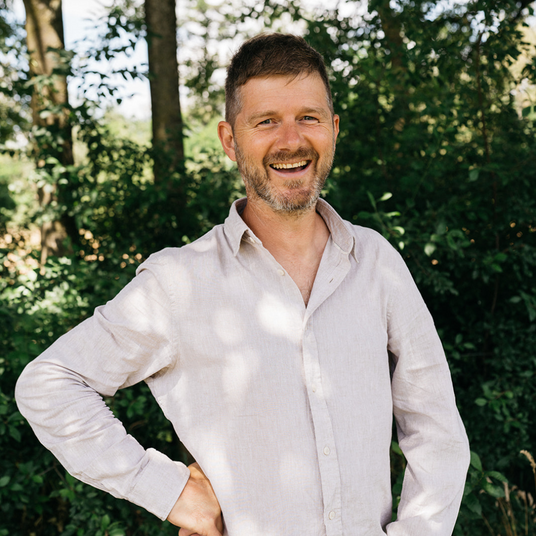
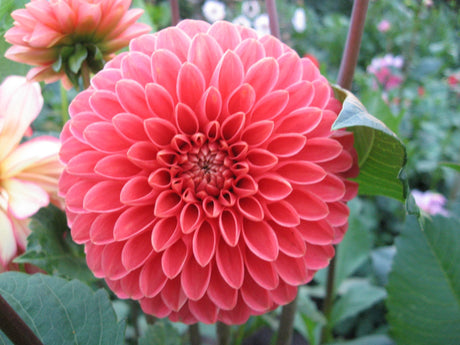
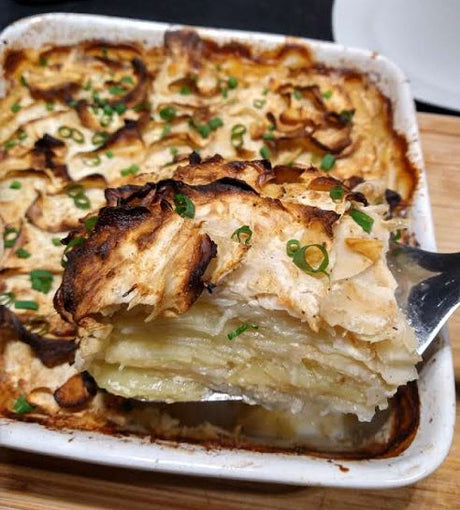

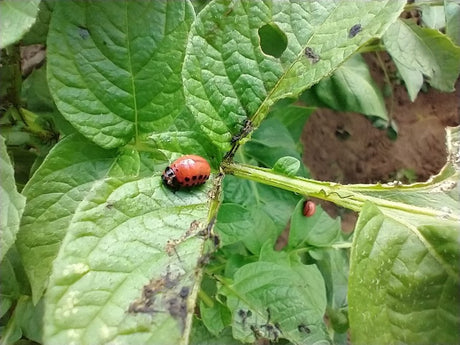

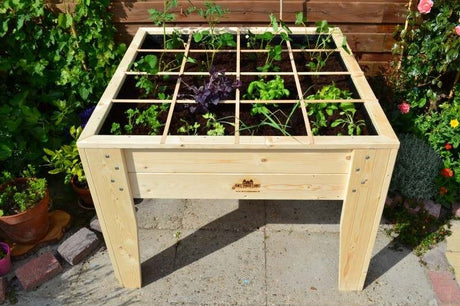


1 comment
Het grote geluk zit in de kleine dingen. Een vers gebakken brood of frambozen uit eigen tuin. Dit (geluk) is maakbaar en wij bieden daarvoor alle tools. Onthaast, vertraag, maak en pluk de vruchten.
Dank je wel! Ik ben het hier zó mee eens💕